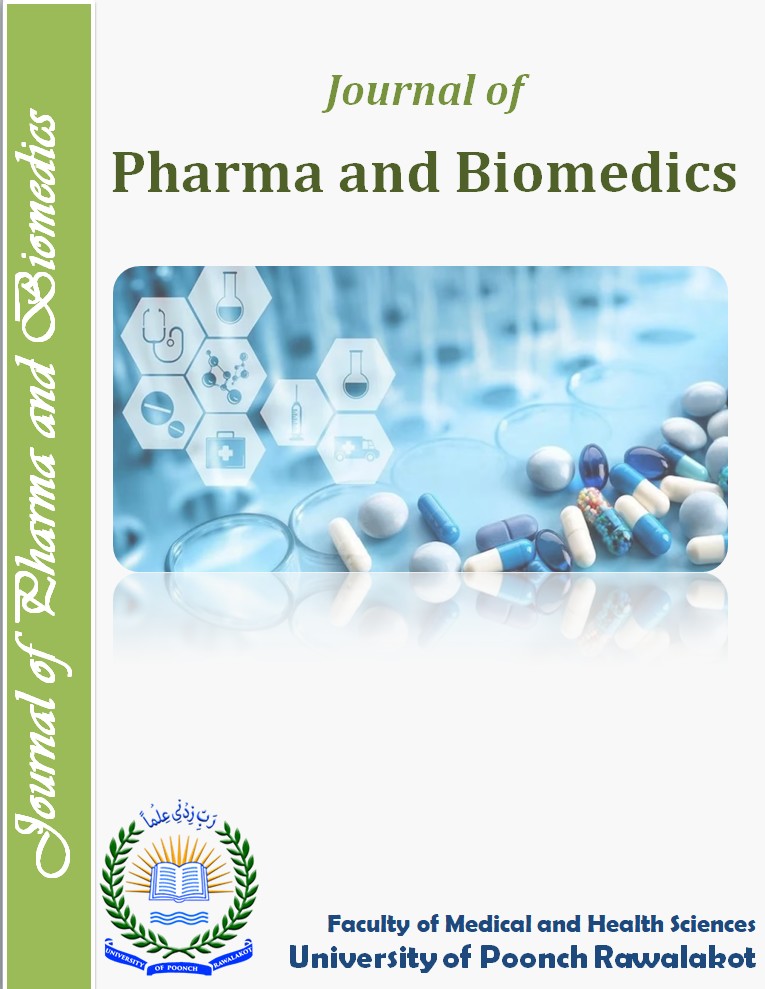Study of types of analgesics prescribed for pain management in adult population of twin cities of Pakistan
Keywords:
Analgesics, Opioid analgesics, Non-opioid analgesics, Pain, Rational drug use, Medication errorsAbstract
Pain is the leading cause of mortality worldwide justifying the rapidly growing demand for safe and effective pain management. Unrelieved pain exerts a negative influence on physical and mental health. It has been consistently identified as the most common reason for seeking medical attention that includes the prescribing of analgesics to the community. This study aims to check the current practice of prescribing analgesics to find the prevalence of frequent use of analgesics in twin cities of Pakistan. 300 medical prescriptions were collected by random sampling method containing different types of analgesics from different hospitals of twin cities. 300 medical prescriptions contain 31.65% of analgesics out of which 30.09% were opioid analgesics and 69.90% were non-opioid analgesics. The most prevalent age group that received analgesics was between 18-25 years (n=51, 17%) and most commonly prescribed to females than males. The most commonly prescribed analgesic was Paracetamol (n=78, 18.4%), Paracetamol + Tramadol HCl (n=73, 17.3%), Diclofenac (n=56, 13.3%), Tramadol HCl (n=45, 10.6%). The results shows that 42-50 year age group takes more opioid analgesics (n=19) whereas the use of non-opioid analgesics was common in the 18-25 year age group (n=55). It is concluded that proper attention must be paid to the rational usage of analgesics as these are not endowed and governed with specific reasoning by the healthcare practitioner. Patients are receiving more than two analgesics per encounter. Most of the medicines are being prescribed without mentioning proper indications, age, and gender in the prescriptions.







